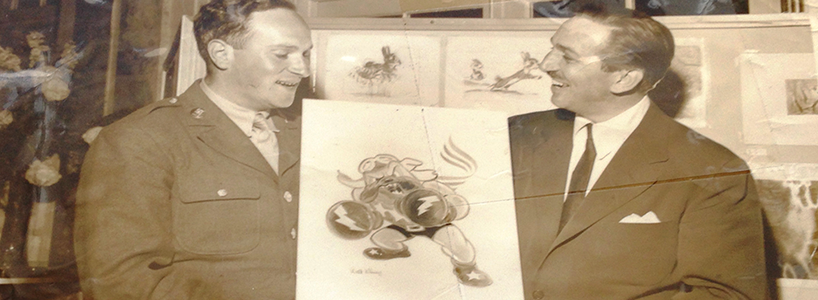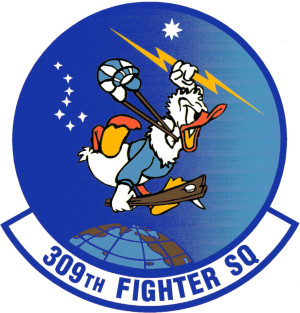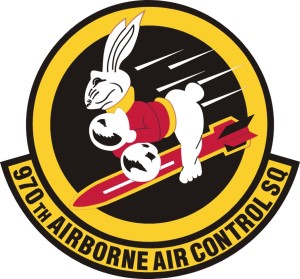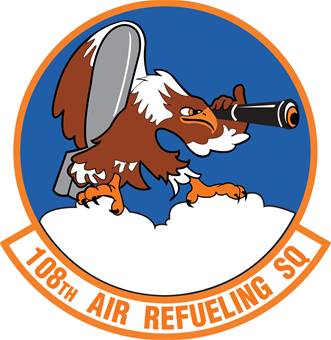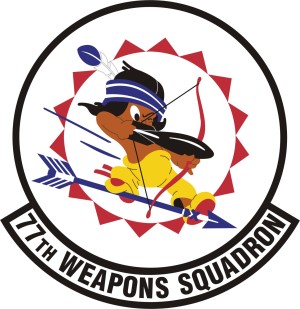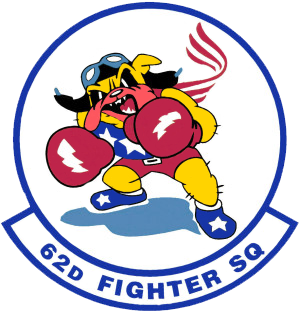When the United States entered World War II, one of the first places the Army invaded was Walt Disney Studios. They rolled in with two goals: to defend a nearby Lockheed factory in case of an attack by the Axis on the West Coast, and to mobilize Disney animators to create instructional videos and artwork for soldiers. Walt, who lied about his age to serve in the First World War (he deployed to France with the Red Cross Ambulance Corps), spearheaded an effort to design—for free—the unit insignia for hundreds of new military units, planes, and tanks. Any request would be honored. The result is a legacy of unit patches featuring cartoon characters with the distinct Disney feel and aesthetic, sometimes even featuring Mickey or Donald themselves. While many of the units were decommissioned in the decades since the war, some endure. Their patches still feature Disney artwork. Here are five unit insignia originally designed by Walt Disney.
1. 309th Fighter Squadron
The “wild ducks” of the 309th have flown many different aircraft from many different home stations under many designations and with many different missions. They’ve been called the 309th Pursuit Squadron, the 309th Fighter-Bomber Squadron, the 309th Fighter-Escort Squadron, and the 309th Strategic Fighter Squadron, among others—but one thing has remained consistent: the 309th’s patch, which features a white duck who’s angry as hell, holding a wooden club with a spike driven through. You probably recognize that ill-tempered duck. His name is Donald. The patch was drawn in 1944.
2. 970th Airborne Air Control Squadron
The rabbit featured on the 970th patch is officially described as a “pugnacious hare,” and to find his cinematic origins, you have to reach far back into the Disney canon, to the studio’s Silly Symphonies—revolutionary animated shorts that appeared in theaters in the 1920s and 30s. One of the best known is the Tortoise and the Hare (1934), which tells the familiar story that “slow and steady wins the race.” The rabbit on the patch is definitely Max Hare from the cartoon—but what’s up with the boxing gloves? To figure that one out, look to the 1936 sequel to the Tortoise and the Hare: Toby Tortoise Returns. This time the featured sporting event is a boxing match. The 970th unit patch was designed by a Disney cartoonist in 1942. The artist’s name is Charles Thorson, and you might be familiar with another of his rabbits—he also created Bugs Bunny.
3. 108th Air Refueling Squadron
Not every unit insignia designed by Disney features a major character. The cartoonists at Walt Disney Productions were (and are, of course) among the best in the world, and could come up with just about any sort of caricature you might imagine. The 108th Air Refueling Squadron patch features an eagle peering through a telescope. This is a nod to the Illinois Air National Guard unit’s heritage: in World War 2, it was the 108th Reconnaissance Squadron. Notably, the patch design first appeared publicly in the New York Times, in a picture of Mickey Mouse painting the eagle on an aircraft tail.
4. 77th Weapons Squadron
The patch for the 77th Weapons Squadron features one of the first unit mascots designed by Disney: a young American Indian named Little Hiawatha, who featured previously in a Silly Symphony animated short. The current design is almost unchanged from the original 1941 illustration, featuring Little Hiawatha holding a bow at the ready. Instead of an arrow stretching its string, however, there is a bomb in its place. (Little Hiawatha is standing astride an arrow on the insignia.) The artist behind the design, Van Kaufman, was a fixture in the Disney insignia design unit, and would later have a wildly successful career in automotive advertising.
5. 62nd Fighter Squadron
The 62nd Fighter Squadron patch features a distinctive bulldog in boxing gloves who is raring back to deliver a punch. This was a Disney design. In April 1943, when the drawing was completed, the 62nd was in Europe and had just started flying its first combat operations against the Axis Powers. The design was hand-delivered to Luke Field (now Luke Air Force Base) by Walt Disney himself.
